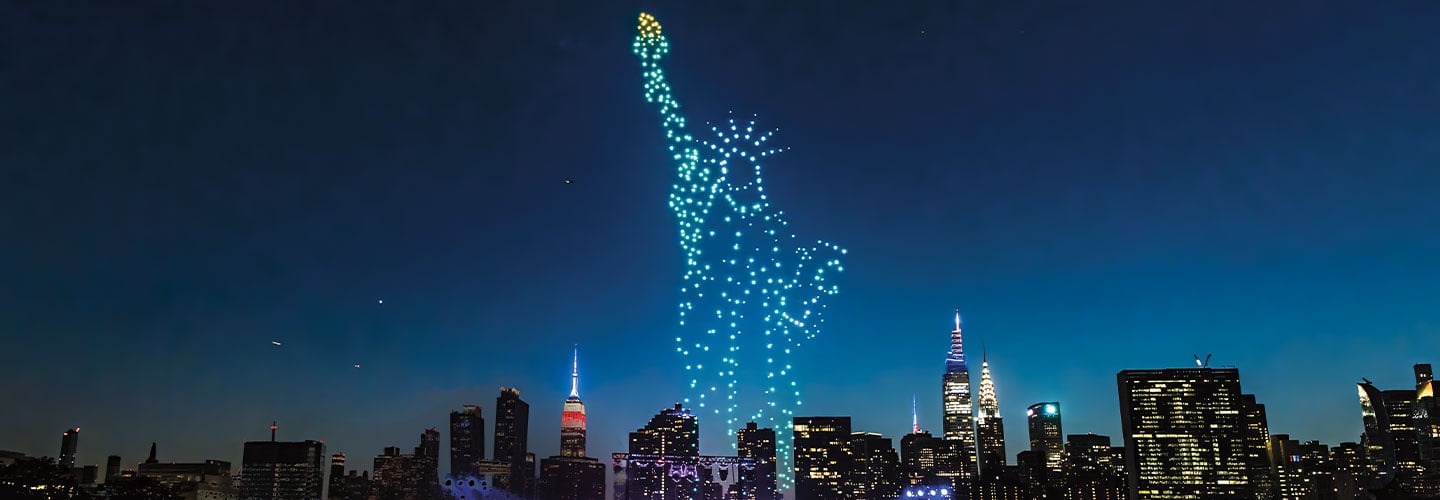Onlookers gasp as a swarm of tiny, brightly lit robots lift into the night sky. As patriotic music plays, the drones change color and maneuver into the shape of an American flag that ripples in the air. They shift position again to form an eagle and then again to re-create the Statue of Liberty. Finally, they spell out “Happy 4th of July!” The crowd below cheers and applauds.
Traditionally, Independence Day celebrations are marked with fireworks displays. Christopher Franzwa is an electrical engineer who co-founded Verge Aero—a company in Texas that produces drone show technology. “For hundreds of years, fireworks have been providing a spectacle that nothing could match,” says Franzwa. But now, drones “allow us to paint the night sky with things people haven’t seen before.” The drones can be programmed to create almost any design you could think of: hearts for Valentine’s Day, cartoon characters like Snoopy, logos for companies, or messages like “Happy Birthday!”
Every drone performance starts on a computer. Designers use a program that converts a picture to pixels—small, illuminated dots that make up an image. Each pixel represents a drone. The computer determines the number of drones needed to create the image, as well as their spacing. A dozen to thousands of drones could be used. Once the entire performance is planned out, a flight control program automatically pilots the drones into place using GPS, which can accurately determine the positions of objects on Earth (see Tiny Fliers). This prevents the drones from flying off course or bumping into one another. The program also makes sure an image will look correct to the audience on the ground.
A cloud of tiny, brightly lit robots lifts into the night sky. The crowd gasps. As patriotic music plays, the drones change color. They move into the shape of an American flag that ripples in the air. They shift position again to form an eagle. Then they re-create the Statue of Liberty. Finally, they spell out “Happy 4th of July!” The crowd cheers and claps.
Independence Day celebrations usually have fireworks displays. Christopher Franzwa is an electrical engineer. He co-founded Verge Aero, a company in Texas. It produces drone show technology. “For hundreds of years, fireworks have been providing a spectacle that nothing could match,” says Franzwa. But now, drones “allow us to paint the night sky with things people haven’t seen before.” The drones can be programmed to create almost any possible design. They can form hearts for Valentine’s Day, cartoon characters like Snoopy, or logos for companies. They can even create messages like “Happy Birthday!”
Every drone performance starts on a computer. Designers use a program to convert a picture to pixels. These small, lighted dots make up an image. Each pixel represents a drone. The computer determines how many drones are needed for the image. It also figures out their spacing. A dozen to thousands of drones could be used. The entire performance is planned out. Then a flight control program automatically pilots the drones into place. It uses GPS to determine the accurate positions of objects on Earth (see Tiny Fliers). That way, the drones don’t fly off course or bump into one another. The program also makes sure the image looks correct to the audience on the ground.

